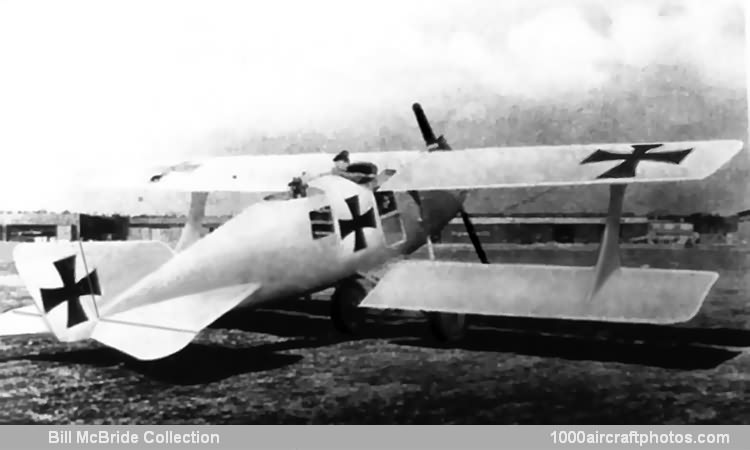The design, by Dipl.Ing. Tantzen, featured an extremely strong, plywood-covered semi-monocoque fuselage, beautifully streamlined and completely filling the interplane gap, giving the aircraft its nickname "Walfisch" ("Whale"). The wings had a single I-strut and a minimum of external bracing wires. An excellent view of the upper hemisphere was enjoyed by both crew members, but the view downward past the nose, already poor, was restricted further by the large side radiators, and made the C.II a difficult aircraft to land. Power plant was an 160 hp Mercedes D III engine.
The first C.II was flown in October 1915, but the first handful of production aircraft were not delivered until March 1916 and had only a rearward-firing Parabellum gun in the observer's cockpit. Some squadrons met the need for a forward-firing gun by installing captured Lewises above the center section, but on later C.IIs a fixed, synchronized 0.312 in (7.92 mm) Spandau machine gun was provided.
The first C.IIs in service were flown by the Kampfgeschwadern involved in the fighting at Verdun and the Somme in spring 1916, and their performance was well above that of contemporary German two-seaters. In fact, the C.II was as fast as the opposing Nieuport and Pup fighters, although it was less maneuverable and took half an hour to reach its fighting altitude of 9,843 ft (3,000 m). A number were lost in landing accidents due to the poor frontal view, and some weakness was found in the outer wing sections. This led to the introduction, from August 1916, of the C.IIa, with revised and reinforced wing tips. Late in 1916 the C.II was used for night bombing with four 27.6 lb (12.5 kg) bombs beneath the fuselage.
In mid-1916 Captain Albert Ball, who scored his first confirmed victory over a C.II, had called it 'the best German machine now', yet it never served at the Front in outstanding numbers; the C.IIs meticulous streamlining demanded careful and therefore costly constructional methods, which restricted the total built. Peak employment of the C.II/C.IIa came in December 1916, when sixty-four were at the Front. It was withdrawn slowly during the first half of 1917, after which the majority were employed for training, though some were retained for combat duty on quieter sectors of the Western Front and in Russia.
Total production is estimated at between two hundred and fifty and three hundred, some two hundred of these by the parent company and the remainder by Linke-Hofmann. Some late-production aircraft had an enlarged vertical tail. In 1916 a single C.III was produced: this was a C.II development with 2-bay wings, parallel interplane struts, revised tail surfaces and a 200 hp Benz Bz IV engine."
Span: 33 ft 10.75 in (7.20 m)
Length: 28 ft 8.125 in (6.20 m)
Height: 9 ft 5.75 in (2.33 m)
Loaded weight: 2,886 lb (1,309 kg)
Max speed: 102.5 mph (165 kmh) at sea level
Service ceiling: 13,123 ft (4,000 m)
Endurance: 4 hrs
